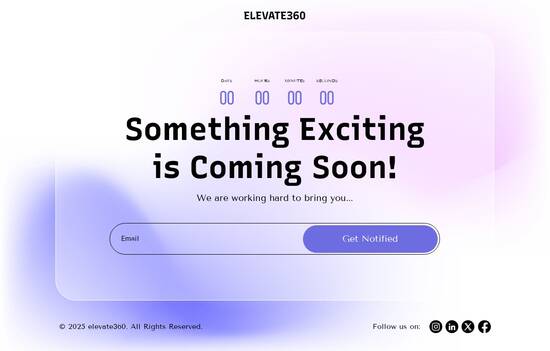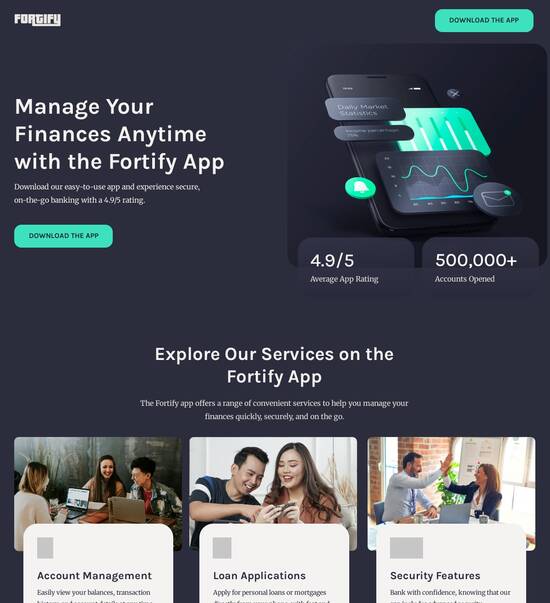
API documentation page template optimized for Asus Zenfone
Explore Similar TemplatesAbout template
Design using a responsive API documentation page template that delivers a flawless experience on Asus Zenfone. Try Instapage today!
Recommended templates

Easy to build without coding
With the intuitive drag-and-drop builder, anyone on your team can create high-converting pages without any knowledge of code or design. Make enhancements to your landing page with custom widgets using Javascript, HTML/CSS, or third-party scripts.

Multiple layouts for any industry and goal
Select from 500+ landing page layouts built to boost conversions across industry-specific scenarios. Customize them by adjusting fonts, adding images, and generating on-brand content with the AI assistant. Quickly scale with Instablocks® and Global Blocks that you can save, reuse, and update globally.

Loads fast and looks polished on any device
Every template is responsive, which means they present professionally on any device and load blazingly fast with our Thor Render Engine. You can also power them up with Google AMP technology to deliver an unparalleled mobile experience and drive higher conversions.

Robust analytics & experimentation
Get real-time updates and reporting across all your devices, showing the number of visitors, conversions, cost-per-visitor, and cost-per-lead. Launch AI-powered experiments, run A/B tests, and use heatmaps to analyze user behavior, then optimize your landing page to maximize conversions.







Easy to build without coding
With the intuitive drag-and-drop builder, anyone on your team can create high-converting pages without any knowledge of code or design. Make enhancements to your landing page with custom widgets using Javascript, HTML/CSS, or third-party scripts.
Multiple layouts for any industry and goal
Select from 500+ landing page layouts built to boost conversions across industry-specific scenarios. Customize them by adjusting fonts, adding images, and generating on-brand content with the AI assistant. Quickly scale with Instablocks® and Global Blocks that you can save, reuse, and update globally.
Loads fast and looks polished on any device
Every template is responsive, which means they present professionally on any device and load blazingly fast with our Thor Render Engine.
Robust analytics & experimentation
Get real-time updates and reporting across all your devices, showing the number of visitors, conversions, cost-per-visitor, and cost-per-lead. Launch AI-powered experiments, run A/B tests, and use heatmaps to analyze user behavior, then optimize your landing page to maximize conversions.
All the features you need to build lead-generating landing pages
Explore more featuresLearn how to build top-performing landing pages for any goal
FAQs
Leading the way in building high-performing landing pages





Maximize your digital campaigns with Instapage's landing page and CRO platform
Instapage stands out as the most powerful landing page and conversion rate optimization (CRO) tool specifically designed to enhance the ROI of your digital marketing efforts. This guide delves into how Instapage's features empower marketing teams across various sectors in the USA, allowing them to create high-converting landing pages without requiring extensive coding skills.
Why choose Instapage for landing page optimization?
With over 100 customizable templates and lead generation elements, Instapage provides the resources needed for effective marketing campaigns. The platform allows marketers from industries like Tech/SaaS, Education, and Financial Services to swiftly create landing pages that not only look appealing but are also optimized to convert visitors into leads.
- Templates: Choose from a library of 100+ conversion-focused designs that cater to various audiences.
- Lead generation: Utilize pre-built elements to effectively capture and nurture leads.
- Ease of use: The intuitive builder eliminates the need for coding, making page creation accessible for all team members.
Step 1: Building your landing page
Creating a landing page in Instapage is a straightforward process. Start by selecting a template that aligns with your campaign objectives. The drag-and-drop interface allows you to easily place elements where they will be most effective.
Step 2: Optimizing for conversions
After building your landing page, the next step is optimization. Take advantage of Instapage's A/B testing features to experiment with different layouts and content. Also, utilize heatmaps to analyze visitor behavior on your page.
- A/B Testing: Compare different versions of your landing page to see which performs better.
- Heatmaps: Visualize where users are interacting most on your page for strategic enhancements.
- Analytics dashboard: Track performance metrics to gauge the effectiveness of your efforts.
Step 3: Personalizing the user experience
To further increase conversions, use Instapage’s personalization features. Dynamic text replacement allows you to tailor content to specific audience segments, ensuring that your messaging resonates well with each visitor's needs.
- Dynamic text replacement: Adjust messaging automatically based on user data.
- AdMaps: Link specific ads to corresponding landing pages to create a cohesive experience.
- Audience tracking: Measure engagement and conversion metrics tailored to distinct segments.
With these steps, marketers can confidently craft landing pages that speak directly to their target audience, boost conversions, and maximize ROI. Instapage’s powerful features simplify the complex world of online marketing.
Ready to enhance your digital marketing strategy? Explore Instapage today to see how you can create high-converting landing pages that drive results.
Optimizing API documentation pages for Asus Zenfone: A deep dive
Understanding the importance of API documentation
API documentation serves as a critical resource for developers, providing detailed information about how to integrate and use the API effectively in their applications. It not only serves as a reference guide but also facilitates communication between various software components in the development ecosystem.
Effective API documentation should include comprehensive details about endpoints, authentication methods, and error messages. By ensuring these elements are clear and accessible, developers can implement APIs with more confidence and creativity.
Endpoint descriptions: Providing specific information about each endpoint's functionality ensures developers can quickly understand how to interact with the API.
Authentication methods: Clearly detailed authentication processes are essential to ensure secure access to the API.
Error messages and handling: Documenting potential errors and their solutions helps developers troubleshoot issues efficiently.
Unique features of Asus Zenfone that enhance API documentation
The Asus Zenfone is designed with user experience in mind, making it a great device for viewing API documentation. Its adaptable design accommodates the evolving needs of developers while ensuring that documentation is clear and effective across various contexts.
The screen size and clarity of the Zenfone make it easy to read detailed descriptions without needing to zoom in excessively. Clear visuals and well-structured content enhance the overall experience.
Screen size and clarity: The Zenfone's high-definition display provides crisp readability for extensive documentation.
Touchscreen functionality: The intuitive interface allows for fluid navigation, making it simpler for users to interact with documentation.
Performance optimization: The device’s processing power facilitates smooth access to multimedia elements, such as videos and interactive diagrams in documentation.
Design elements for a Zenfone-optimized documentation page
To make the most of the Zenfone's capabilities, the design of API documentation should prioritize responsive design techniques. A fluid layout effectively adjusts to various screen sizes, ensuring usability across devices.
Utilizing media queries and a flexible grid system is vital. These techniques allow the layout to adapt while maintaining a core structure, enhancing user interaction.
Responsive design techniques: Ensures that documentation layouts respond suitably to the Zenfone’s screen size.
Typography and color schemes: Selection of appropriate fonts and contrasting colors significantly affects readability and user experience.
Font sizes and styles: Recommended sizes should be easily legible at a glance, enabling efficient navigation.
Essential content elements of an API documentation template
An effective API documentation template should encompass several critical content elements. Starting with an overview section that introduces the API's purpose and functionality sets the stage for users.
Following the overview should be thorough sections on authentication methods, endpoint documentation, error handling, and versioning info. Each of these components is crucial for delivering a complete understanding of how to work with the API.
Overview section: Brief introduction explaining the API's purpose and functionality.
Authentication: Detailed methods for authenticating with the API.
Endpoints documentation: Comprehensive descriptions of endpoints, covered through HTTP methods, required parameters, and sample requests/responses.
Error handling: Common errors, their meanings, and workarounds.
Versioning information: Systems for tracking changes and upgrades over time.
Q&A section: Community questions and answers, enabling users to access collective knowledge.
Leveraging technology to enhance API documentation
Using tools like Swagger, Postman, or OpenAPI can significantly streamline the process of generating API documentation. These technologies provide structured frameworks that simplify the documentation workflow.
Moreover, interactive documentation features, such as collapsible code samples that can be tested directly on the Zenfone, enrich the user experience. These elements encourage experimentation and learning.
Using tools and frameworks: Streamlining documentation generation through established platforms.
Interactive documentation features: Engaging users with live code samples that can be executed directly.
Community engagement and contributions
Building a knowledge collective fosters an inclusive environment where developers can share insights, challenges, and solutions. Engaging community forums and chat groups empower users to actively participate in discussions around API usage.
Utilizing these collectives can effectively address common problems. By tapping into shared experiences, developers can find quicker resolutions and improve their understanding.
Creating knowledge collectives: Establishing forums for developers to come together and share knowledge.
Utilizing collectives for problem-solving: Strategies for leveraging group insights to tackle FAQ.
Enhancing user experience with multimedia solutions
Multimedia content, such as video tutorials and interactive diagrams, significantly enhances API documentation's effectiveness. Video explanations cater to visual learners, making complex functionalities more accessible.
Interactive diagrams and flowcharts provide visual representations that clarify how various APIs interact. This kind of graphical content can lead to a deeper understanding of the integration process.
Incorporating video tutorials: Visual learning aids that simplify complex concepts.
Interactive diagrams and flowcharts: Visual tools that outline how API components connect.
Strategies for continuous improvement of API documentation
Collecting user feedback represents a crucial strategy for assessing documentation effectiveness. Implementing mechanisms that allow for real-time feedback can provide valuable insights into areas needing refinement.
Regular updates are essential to maintain relevance and accuracy. By keeping documentation aligned with API changes and users' evolving needs, developers enhance overall satisfaction and usability.
Collecting user feedback: Gathering insights from readers to refine documentation.
Regular updates and maintenance: Keeping documentation current with API developments and user needs.
Final thoughts on an effective API documentation page for Asus Zenfone
Measuring the success of API documentation is paramount. Establishing and tracking key performance indicators can provide quantitative data to assess usability and effectiveness. Metrics such as user engagement, time spent on the page, and feedback ratings paint a comprehensive picture of performance.
As technology evolves, so will the expectations surrounding API documentation. Anticipating advancements in features, interactivity, and design will help future-proof documentation efforts and maintain high engagement levels.
Measuring success: Defining and tracking KPIs to evaluate documentation performance.
Future trends in API documentation: Expected advancements in technology and user experience.
Ready to skyrocket conversions?
Supercharge your ad campaigns with high-performing landing pages
Get started














